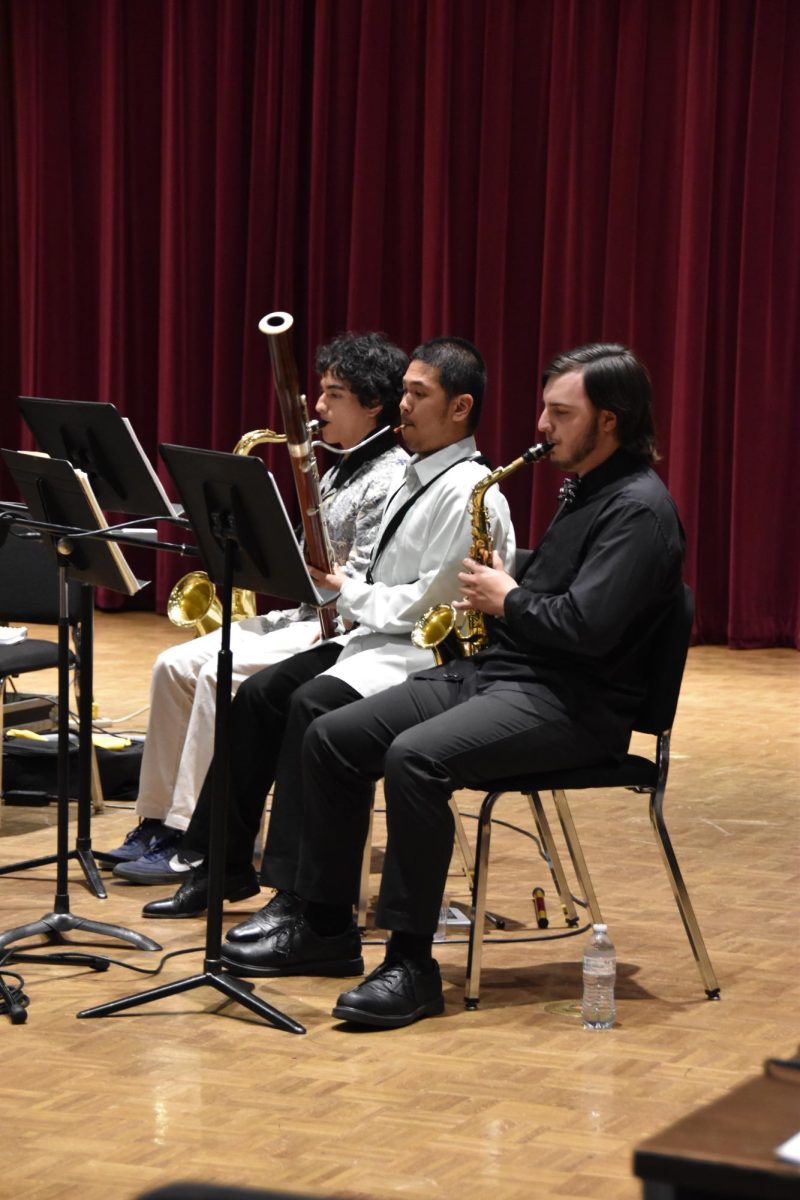I was recently treated to a performance of “Love and Information,” a production written by Caryl Churchill and directed by Gregory Brown. It premiered at LMC’s theater March 28 and ran for about a week.
Part of the play’s appeal is that it is non-linear, with no established plot or named characters. All of its themes and commentary about the titular love and information are presented through fragmented scenes.
As an audience, we have no context as to who these characters are outside of a small glimpse into their lives, and the fun part is trying to figure the rest out on your own.
The production was accompanied by the label “a kaleidoscope of human experiences,” described in the director’s notes as “similar to channel-surfing TV with a remote, or, more currently, scrolling through social media on our phones.”
I could not agree more with these descriptions. With no concrete settings or limitations on what gender, race or age the characters must be, the cast and production team were given total freedom to present these experiences however they chose, and their efforts paid off.
Within the 80-minute runtime, the audience experienced a constant flow of unique segments performed by the cast, each providing a tiny conversation or conflict between the characters. It was fast-paced — with some segments being much longer than others — but never ceased to be entertaining.
Each part was introduced by a title screen: bold white letters on a black background as cast members positioned themselves on stage. Sometimes there were two actors, and sometimes there were more; sometimes the dialogue was long, and other times, short and to the point; there were moments of silliness and moments of despair.
These segments perfectly encapsulated the titles they represented. The cast did an excellent job at delivering their lines and bringing these scenes to life. They often felt like real people caught in the moment, which made for an effective viewing experience.
While most of these scenes had little to do with one another, some recurring segments weaved little plot threads throughout the performance; such as “Depression,” and a series of scenes beginning with “The Child Who Didn’t Know,” followed by whichever noun the segment was covering.
Of course, I preferred some segments over others, but this is more a matter of personal preference rather than an indication of quality. My favorites were “Secret,” “Fired,” “Dinner,” “Decision,” “Virtual,” and “Facts,” for no particular reason, other than the content either resonated with me or amused me in some way.
I suspect anyone who saw this play will have their own takeaways and favorite moments, as each scene was designed to connect with the audience differently.
In the end, “Love and Information” achieved its goal of showcasing the nuanced experiences in a way that was disconnected, yet simultaneously cohesive. It is a fine line to walk between a bold stylistic choice and losing the audience, and walk it with confidence they did. I never once felt lost or out of place during this performance.
It was funny, intelligent, sad, messy, angry, hopeful, and above all else, fundamentally human.






